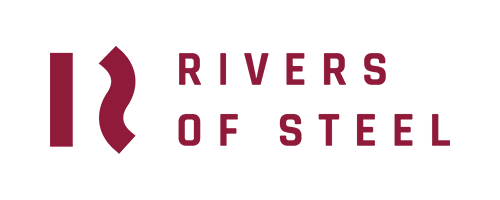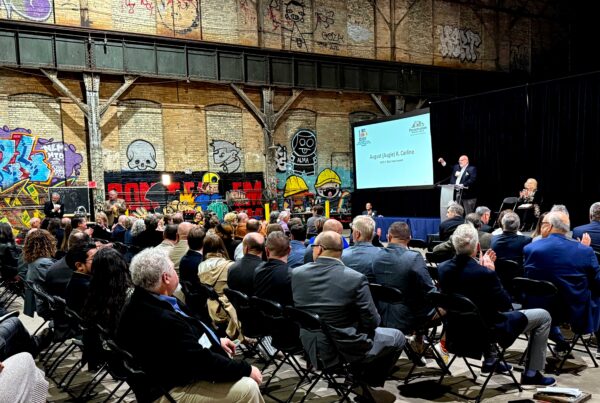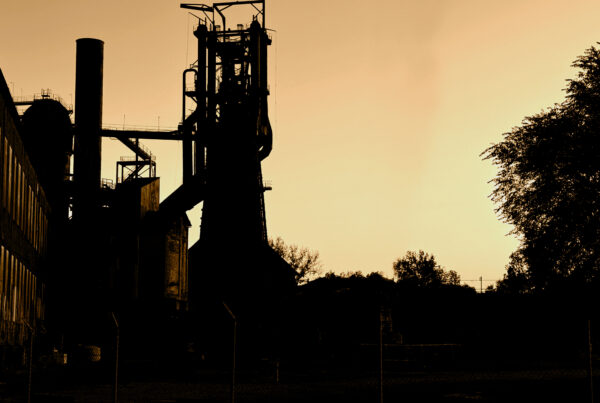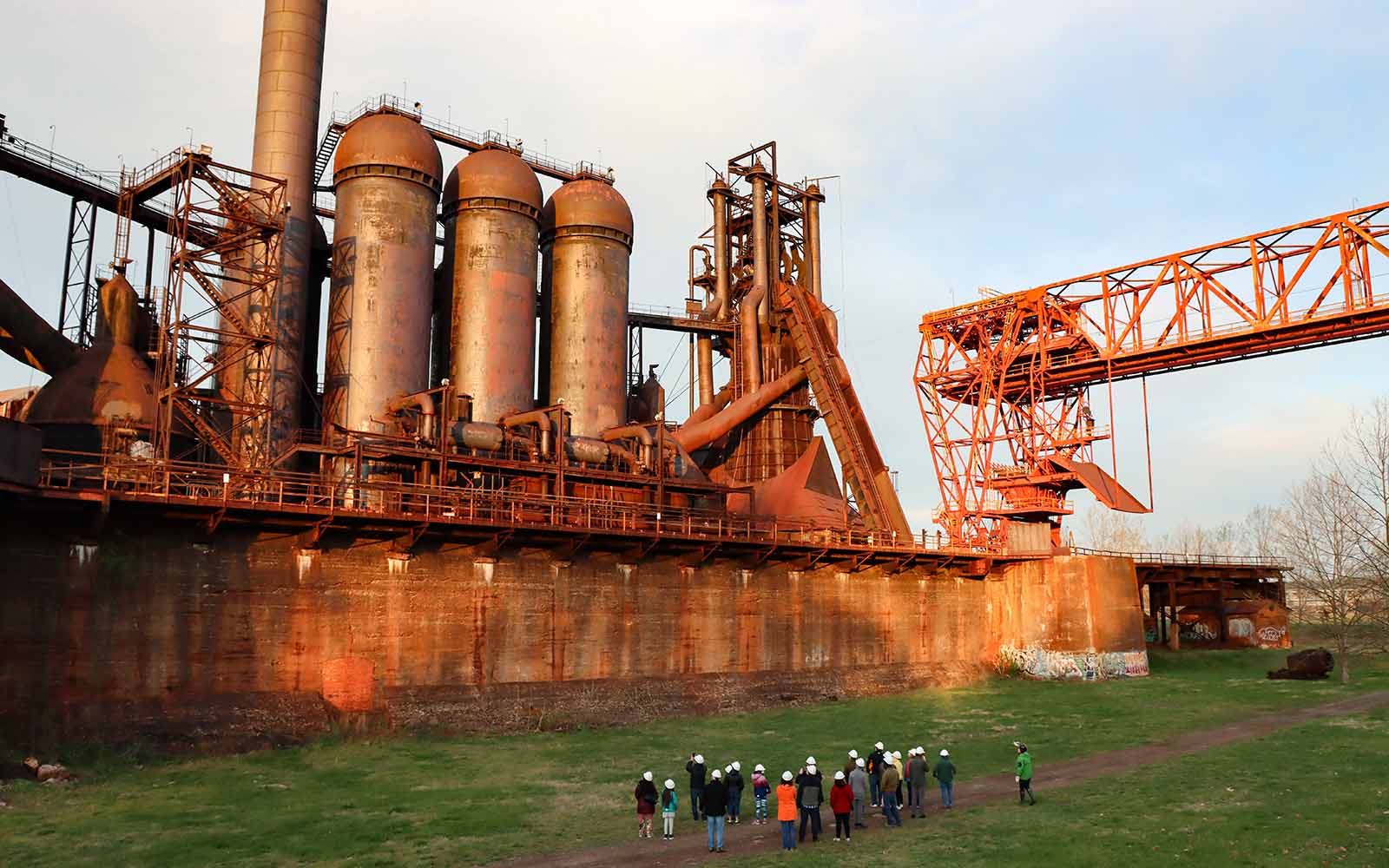
Dr. Kirsten L. Paine
Metal Arts Team Hosts Second Intercollegiate Iron Pour at Carrie
While commercial iron production ceased at the Carrie Blast Furnaces in 1982 and operations shuttered entirely in 1984, there has always been a lingering hum of creative inspiration that draws people to the site. The Rivers of Steel Metal Arts team thrives at Carrie. They continuously make opportunities to teach people and show them what it is like to create with liquid metal.
Led by Ed Parrish Jr., the Metal Arts Coordinator and Furnace Master at Rivers of Steel, workshops like the recent Intercollegiate Iron Pour increase access to the site’s creative potential and welcome artists and craftspeople from all backgrounds to gather and tap into Carrie’s legacy of ironmaking. Last month students from Carnegie Mellon University, Alfred University, Seton Hill University, the University of North Carolina at Greensboro, and the University of Notre Dame gathered for an intensive workshop that culminated in an iron pour in front of the nearly 120 year-old Carrie #6.
Participants ranged from undergraduates learning to cast metal or refining their skills, to graduate students working on capstones and theses, professors, and artists. Carnegie Mellon students were enrolled in a mold making class. Some students brought molds with them for the pour.
Intercollegiate iron pours like the one at Carrie are invaluable hands on experiences for students. Such programs can light a fire and stoke a passion for iron making, casting, and honing craftsmanship for an entire lifetime. Paige Henry, Metal Arts Technician at Rivers of Steel, remembers her first iron pour in 2007 at the Salem Art Works. She was a student at Alfred University at the time. She says, “I was 19. It was a pivotal moment for me that changed the trajectory of my undergraduate studies. It was not only a team effort to create art, but as soon as the bottom dropped we all became a sort of family. After many years of attending the Intercollegiate I later became the Foundry Director at S.A.W. when their Intercollegiate iron pour evolved into their inaugural Festival of Fire.” Carrie could be life changing for someone in the same way Salem Art Works was for Paige Henry, and it starts with bringing people together.
Iron pours are collaborative by nature. In addition to skillwork, participants hone in on critical teamwork. Henry says, “we try to demystify the cast iron process and emphasize that there is a job for everyone. If someone wants to try pouring the bull ladle, we have a safe and controlled space to give them the guidance and opportunity to do so. If someone isn’t ready to get close to the fire and heat, and lift heavy things they can take photos, observe, and/or be the timekeeper; every person and every job is necessary for a safe and comprehensive iron pour. We always seek ways to be as accessible and safe to all sorts of people that want to participate.”
As far as what sets an Intercollegiate Iron Pour apart from some other arts events at Carrie, Henry says that “an intercollegiate brings together many different colleges and universities to participate in an almost ritualistic practice to make art where everyone is an integral component in its success.” Ritual is key. The practice taps into traditions that stretch millenia, bringing ancient artforms to life at the base of a monument to the creation of modernity. The ritual–where attention to every detail of the process is critical and communication is vital–brings people close. “This transfer of ideas and conversations strengthened bonds and created new friendships that otherwise may never have existed,” Henry remarks.
Looking ahead to another Intercollegiate Iron Pour in 2026 and beyond, the team responsible for its success will build on a decades-long foundation of metal arts experience and an approach that prioritizes collaboration. Henry stresses that Parrish’s vision ensures that collaboration is equitable. She says, “I think the foundation that Ed has laid for his program, so to speak, is that everyone has a place at the table and is valued.” Drawing a clear connection between opportunities to create art and opportunities to create community, Henry remarks, “Ed has created a safe space for all sorts of people with varied backgrounds to come together to make art.” She continues, “Without his vision and devotion to the craft and the people, I don’t believe the Metal Arts program at the Carrie Furnaces would be where it is today.”
Henry considers even more potential for expansion. She points to Parrish’s sophisticated set up as an essential part of the future. “The biggest benefit to working out of the Carrie Furnaces is the facility that Ed Parrish has created and provided to the cast iron community. The sand molding set up is leaps and bounds more efficient and user friendly than some places that have had a metal casting program since the late ’80s,” she says.
What does this mean going forward? Henry offers seemingly endless possibilities. “I was in talks at the NCCCIAP at Sloss Furnaces this April with Bob Rogers from the Memphis Metal Museum about potentially offering a green sand workshop during next year’s Intercollegiate. We would like to pair that offered workshop with a blacksmithing workshop making green sand slicks — which are tools for making green sand molds. Strengthening our connections with other existing organizations has been a really positive move forward in connecting our students and participants in what we are doing outside of our region and academia. Camping at the Carrie Furnaces would also make our Intercollegiate more accessible as well as inviting guest furnaces to participate as we grow.”
Programs like the Intercollegiate Iron Pour and the Iron Workshops also allow individual artists to grow, to experiment, and to practice their craft. Detroit-based artist Jay Elias is relatively new to metal arts. He started learning from Casey Westbrook in 2014 and quickly took to iron as an essential, visceral medium. He has attended several iron pours at Carrie. One of his newest pieces, called “Unfinished Business” is an incredible reimagination of a jail cell. The piece is now installed in Carrie’s Iron Garden and beckons visitors to interact with vestiges of incarceration. Elias’ “Unfinished Business” is stunning, and every time he comes back to Carrie, he brings more of his vision to share with others.
While the “driving force of having an Intercollegiate iron pour at the Carrie Furnaces was bringing the cast iron movement back to its roots — to start the spark with students–” the driving force of the Metal Arts program is to bring even more people to a center of industrial arts. Many programs are very beginner-friendly, and others are geared toward more experienced artists. For newcomers interested in learning a new artform– foundry basics, pattern making, mold making, and casting–Intro to Iron Casting might be an exciting opportunity. This three-day course will be offered from May 29th to May 31st, 2025. For more experienced artists who require more shop time and personal instruction, the Weeklong Iron Intensive will be held from May 26th to May 31st, 2025.
**This article would not be possible without Paige Henry’s time and insight. I am grateful for her thoughtful contributions.**
